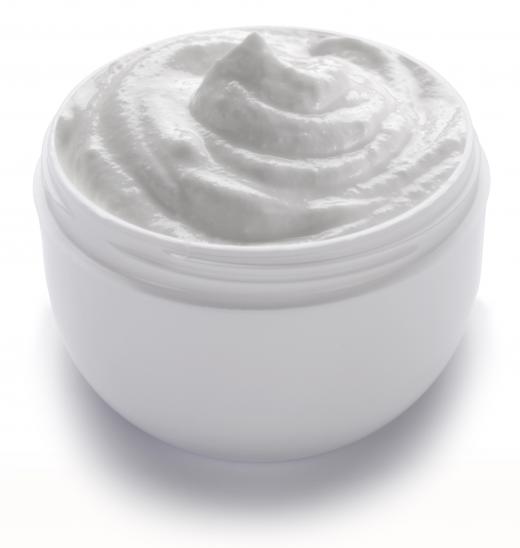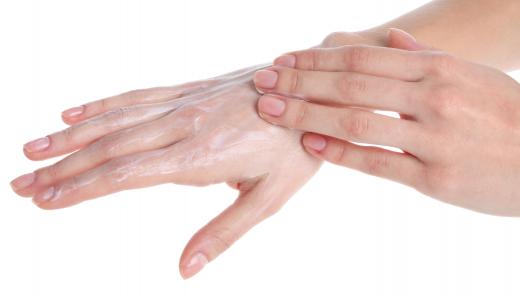Broadly speaking, skin whitening is any means of lightening the pigmentation of the skin. Most of time applications are topical, but sometimes they also involve things like lasers or surgical procedures. There are a couple of different reasons why people seek out these sorts of products and services. Sometimes, certain patches of skin are noticeably darker than others, and whitening creams or treatments can give the skin a more unified and unblemished appearance. This tends to be most common with markings that are really noticeable, as well as those that are on the face and hands. In communities and cultures where naturally dark skin is seen as something of a negative attribute, people sometimes also seek to lighten the skin covering their entire bodies, frequently in an effort to pass as a different race or to gain access to opportunities that might otherwise be unavailable. Most topical whiteners are temporary in their effects, and must be reapplied more or less constantly to give consistent results. Some ingredients are more effective than others, and most come with at least a few side effects.
Understanding Skin Pigmentation Generally

Generally, a person’s skin color depends on melanin, which is a type of pigment made in melanocyte cells. People are usually born with certain predetermined levels of melanin, which, among other things, determines the relative darkness or lightness of their complexion. Environmental factors, particularly exposure to sunlight, can cause the melanocytes to increase their production of melanin. This can result in considerable darkening of the skin. In some cases, such sun damage shows up in the form of brown colored age spots.

Hyperpigmentation, or excessive darkening of certain areas of the skin, may also occur after an injury, or from skin disorders such as acne. Pregnancy or hormone therapy, too, might stimulate the melanocytes and can lead to a type of hyperpigmentation called melasma. In this skin condition, brownish patches may appear on the face.
How Skin Whiteners Work

Skin whitening products can help reduce excessive pigmentation. Typically, whitening creams contain ingredients that hinder the process whereby melanin is produced. Hydroquinone is a chemical often used for its skin lightening effect. Over the counter skin bleaching products may have two percent hydroquinone. A doctor’s prescription is usually needed for a skin lightening cream with four percent or higher concentration of hydroquinone.

Topical skin lightening creams and lotions often contain chemical agents such as hydroquinone and azelaic acid. Some whitening creams have plant extracts that could have a bleaching effect on the skin. A dermatologist may prescribe a high concentration whitening cream, or perform a procedure such as a chemical peel for pigmentation irregularities.
Reliance on Natural Ingredients

Many products claim to be "all natural," usually by relying on naturally-derived ingredients, in particular acide. Many, for instance, feature kojic acid and azelaic acid as their active ingredients. Several skin lightening products include arbutin, which can be extracted from mulberry, bearberry, or cranberry. Papaya, lemon, and orange are among the fruits that may lighten the skin naturally. These fruits can improve the complexion when included in large amounts in one’s diet, or when their juice is applied directly to the skin.
Topical skin whitening products sometimes include a form of vitamin A such as tretinoin, in addition to hydroquinone. This formulation can be beneficial in skin conditions like melasma. Many whitening creams contain a sunscreen as well to protect the skin from further damage from sun’s ultraviolet radiation.
Chemical Peels
Whiteners may also include chemical peels using fruit acids or other peeling agents. The procedure typically involves application of a peeling solution such as an alpha-hydoxy acid to exfoliate the darker, pigmented skin. A dermatologist could perform a procedure known as dermabrasion to lessen acne scars, brown spots, and similar pigmentation problems. In this technique, the skin’s surface is lightly rubbed with a special device.
Laser Options
Laser treatment is among the recent options available to improve skin’s appearance. It may be used for uneven skin tone, and forms of hyperpigmentation such as melasma. This treatment can be directed specifically to the affected areas, or performed on the entire face.
Potential Risks and Precautions
People usually need to be careful when using these products, even those billed as natural, as they can and often do have side effects. The chemicals in bleaching creams may cause local redness and irritation. In some people, regular use of bleaching cream could result in skin discoloration, chronic dryness, and infection. Not all skin lightening procedures are suitable for every skin type, either. For instance, laser treatment could cause adverse changes in pigmentation in some people.









